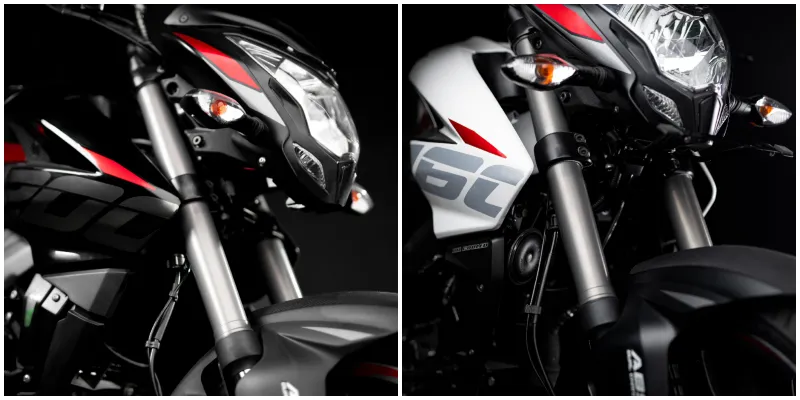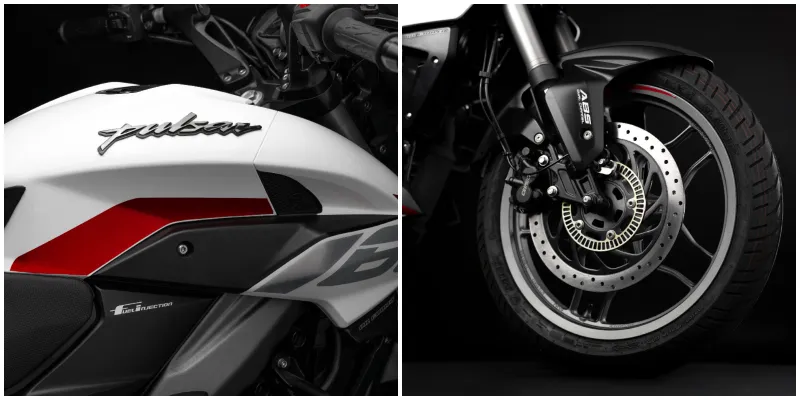Meet 2023 Bajaj Pulsar NS200, NS160 with USD front forks
While Pulsar NS160 competes against Hero Xtreme 160R and TVS Apache RTR 160 4V, Pulsar NS200 locks horns with Apache RTR 200 4V and KTM Duke 200.
Bajaj Auto has launched updated iterations of two motorcycles in the Pulsar range—NS160 and NS200—largely remained untouched till now since the time they were launched more than a decade ago. While the updated Pulsar NS160 is priced at Rs 1.35 lakh, the NS200 is tagged at Rs 1.47 lakh (both ex-showroom).
The handful of updates has resulted in a price hike of Rs 10,000 and Rs 7,000 for the NS160 and NS200, respectively. In their latest avatars, the naked streetfighters have gained some new features and colour schemes, making them more relevant with time.

2023 Bajaj Pulsar NS160
What’s new?
The biggest update in the new NS160 and NS200 is the addition of 31mm and 33mm upside-down front forks, respectively, making them the first Pulsars to be bestowed with this feature. The rear suspension continues with a mono-shock unit for both bikes, making them sportier and improving their handling, especially around corners.
The bikes have borrowed lighter 17-inch alloy wheels from the quarter-litre Pulsars, and as a result, the NS200 is 1.5 kg lighter than its predecessor. On the other hand, NS160 is 1 kg heavier than the outgoing model since it uses fatter 100/80 front and 130/70 rear tyres. With the latest update, Bajaj offers dual-channel ABS as standard on both motorcycles.

Upside-down forks on NS200 (L) and NS160 (R)
Braking hardware is updated to a larger 300mm front disc brake, instead of a 260mm unit offered previously, and a 230mm rear disc, whereas Grimeca callipers replace the ByBre units. Besides, the updated instrument console now offers information like gear position indicator, fuel efficiency data, and a distance-to-empty readout.
Both motorcycles are offered with four colour options—Metallic Pearl White, Glossy Ebony Black, Satin Red, and Pewter Grey.
What’s not new?
Both models carry forward the same powertrains as their respective predecessors. Pulsar NS160 is powered by a 160cc single-cylinder oil-cooled motor that pumps out 16.7bhp and 14.7Nm of peak torque and is mated to a five-speed gearbox.

Pulsar NS160, NS200 updates: new body graphics (L) and disc brakes (R)
The NS200, on the other hand, is propelled by a 199.5cc, liquid-cooled, SOHC 4-valve engine that churns out 24.1 bhp and 18.74 Nm of peak torque. This unit is paired with a six-speed gearbox. Moreover, both engines are now OBD-2 (onboard diagnostics) compliant and compatible with E20 fuel (20% ethanol blend).
(Images courtesy: Bajaj Auto)
Edited by Suman Singh







